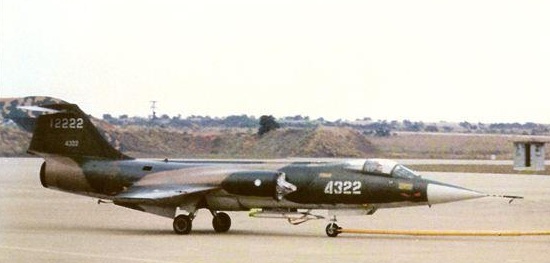


Flying along a 12-mile (19.3 kilometer) section of California Highway 167 (Pole Line Road) on the north shore of the lake, Captain Coan flew 27 laps in just over seven hours, until the Huskie ran out of fuel and settled to the pavement in a low-altitude autorotation. Without brakes and with the rear wheels locked, the helicopter rolled off the side of the roadway, but came to a stop before ending up in a ditch. The total distance flown was 1,055.16 kilometers (655.65 miles), a new Fédération Aéronautique Internationale (FAI) World Record for Distance Over a Closed Circuit Without Landing.¹

This same helicopter, flown by Captain Walter C. McMeen, set an FAI World Record for Altitude with a 1000 kilogram Payload to an altitude of 8,037 meters (26,368 feet) over Luke Air Force Base, Arizona, 25 May 1961.² On 18 October 1961, again at Bloomfield, Lieutenant Colonel Francis M. Carney set a World Record for Altitude Without Payload when he flew 60-0263 to 10,010 meters (32,841 feet).³ The following week, on 24 October 1961, Colonel Carney set six more world records, flying the HH-43B to 3,000 meters (9,853 feet) in 2 minutes, 41.5 seconds;⁴ 6,000 meters (19,685 feet) in 6 minutes 49.3 seconds;⁵ and to 9,000 meters (29,528 feet) in 14 minutes, 31 seconds.⁶ The following summer, Captain Chester R. Radcliffe, Jr., set an FAI World Record for Distance Without Landing when he flew it from Hill Air Force Base, Utah, to Springfield, Minnesota, a distance of 1,429.80 kilometers (888.44 miles), 5 July 1962.⁷


A turboshaft engine drove a unique system of counter-rotating and intermeshing rotors to provide lift, thrust and directional control. The counter-rotation cancelled the torque effect so no anti-torque, or tail, rotor was necessary. This allowed all of the engine’s power to drive the main rotor system.
The fuselage of the H-43B was 25 feet, 2 inches (7.671 meters) long. Each rotor had a diameter of 47 feet, 0 inches (14.326 meters). It’s height was 15 feet, 6½ inches (4.737 meters). The helicopter’s empty weight was 4,470 pounds (2,028 kilograms) and its maximum gross weight was 8,800 pounds (3,992 kilograms).****

The Huskie’s economical cruise speed was 98 miles per hour (158 kilometers per hour), and the maximum speed was 120 miles per hour (193 kilometers per hour). Its hover ceiling out of ground effect (HOGE) was 18,000 feet (5,486 meters), and in ground effect (HIGE) was 20,000 feet (6,096 meters) and it had a range of 235 miles (378 kilometers). Normal rotor speed in flight was 255–260 r.p.m., with a minimum 238 r.p.m. in autorotation.
Captain Coan was awarded the Distinguished Flying Cross for the record flight. Later as a major, he commanded Detachment 8, 38th Aerospace Rescue and Recovery Squadron, at Cam Ranh Bay Air Base during the Vietnam War. He retired from the Air Force at the rank of lieutenant colonel.
With the call sign Pedro, the HH-43 was a rescue helicopter that served in combat during the Vietnam War.
The record-setting Kaman HH-43B Huskie 60-0263 was last assigned to Detachment 3, 42nd Aerospace Rescue and Recovery Squadron, Kirtland Air Force Base, New Mexico. It is in the collection of the National Museum of the United States Air Force, Wright-Patterson Air Force Base, Ohio. Its distance record still stands.

¹ FAI Record File Number 1258
² FAI Record File Number 13154
³ FAI Record File Number 1870
⁴ FAI Record File Numbers 13057 and 13135
⁵ FAI Record File Numbers 13056 and 13136
⁶ FAI Record File Number 13137
⁷ FAI Record File Number 13208
**** Maximum overload gross weight is 9,150 pounds (4,150 kilograms) at a load factor of 2.0
© 2020, Bryan R. Swopes
























